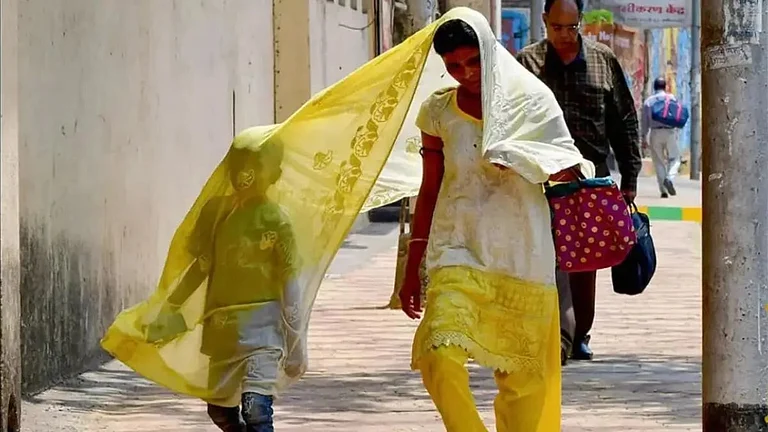The India Meteorological Department (IMD) forecast hotter-than-usual temperatures from April to June, with more heatwave days in central and eastern India and the northwestern plains, while addressing an online press conference on March 31.
IMD Warns of Scorching Heatwave from April to June: Will Action Plans Be Enough to Prevent Crisis?
With temperatures expected to soar across much of India, experts are raising concerns about the effectiveness of current heat action plans to mitigate health risks and strain on infrastructure
According to the predictions, most parts of the country will see higher-than-normal maximum temperatures, except for some areas in western and eastern India where the temperatures are expected to be normal. Minimum temperatures will also be above normal in most regions, IMD Chief Mrutyunjay Mohapatra said in an online press conference.
"From April to June, most parts of north and east India, central India, and the plains of northwest India are expected to experience two to four more heatwave days than normal," he said.
Usually, India records four to seven heatwave days from April to June.
An IMD official had earlier said northwest India might face double the number of heatwave days during the summer.
The region normally experiences five to six heatwave days during the season.
States likely to see above-normal heatwave days include Rajasthan, Gujarat, Haryana, Punjab, Madhya Pradesh, Maharashtra, Uttar Pradesh, Bihar, Jharkhand, West Bengal, Odisha, Chhattisgarh, Telangana, Andhra Pradesh and the northern parts of Karnataka and Tamil Nadu.
In April, most parts of India will likely witness higher-than-usual maximum temperatures. However, some areas in the extreme southern and the northwestern regions may experience normal temperatures.
Minimum temperatures will be higher than usual across most of the country, except for a few places in the northwest and the northeast where temperatures may be normal or slightly below normal, Mohapatra said.
Experts have warned that India should prepare for a peak electricity demand growth of 9 to 10% this summer season, with the country expected to experience a higher number of heatwave days.
Last year, the all-India peak electricity demand crossed 250 gigawatts (GW) on May 30 — 6.3% higher than projections.
Climate change-induced heat stress is one of the key factors driving electricity demand.
Heat Action Plans to Combat Crisis
According to a study published by the Sustainable Futures Collaborative (SFC), a New Delhi-based research organisation on March 19, most of the heat action plans (HAPs) presented by multiple Indian cities lack long-term strategies to combat upcoming threat of extreme heat in the country. The study also indicated that the cities with such strategies often implement them poorly.
Such gaps in planning could result in a higher number of heat-related deaths due to more frequent, intense and prolonged heat waves in the following years, reported the Indian express.
Speaking about ways to address challenges posed by heatwaves, Mohapatra said, “During heatwaves, elevated temperatures pose significant risks, especially for vulnerable populations like the elderly, children, and those with pre-existing health conditions, who are more susceptible to heat-related illnesses such as heat exhaustion and heatstroke. Additionally, prolonged periods of extreme heat can lead to dehydration and strain infrastructure such as power grids and transportation systems. To address these challenges, anticipatory actions as per guidelines of National and State Disaster Management Authorities and heat action plans may be taken. This includes providing access to cooling centres, issuing heat advisories, and implementing strategies to alleviate urban heat island effects in affected areas etc., among others.”
(With inputs from PTI.)

